Themed collection 2014 Hybrid Materials

Hybrid materials
A collection of articles on the theme of “Hybrid Materials”, dedicated to Prof. David Avnir on the occasion of his 65th birthday.

Nanoscale, 2014,6, 6219-6219
https://doi.org/10.1039/C4NR90040E
Hybrid materials science: a promised land for the integrative design of multifunctional materials
Hybrid organic–inorganic materials: past, present, and future.

Nanoscale, 2014,6, 6267-6292
https://doi.org/10.1039/C4NR01788A
Integrated graphene/nanoparticle hybrids for biological and electronic applications
This review highlights recent significant advances of graphene/nanoparticle hybrids for electronics and biological applications.
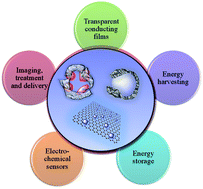
Nanoscale, 2014,6, 6245-6266
https://doi.org/10.1039/C4NR00612G
Increasing the activity and enantioselectivity of lipases by sol–gel immobilization: further advancements of practical interest
The previously developed sol–gel procedure for immobilizing lipases has been extended by optimizing such parameters as the silicate precursor, the additive and the conditions of silicate formation, resulting in an improved protocol for efficient kinetic resolution of chiral alcohols.
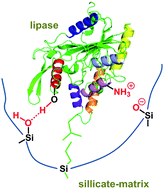
Nanoscale, 2014,6, 6220-6228
https://doi.org/10.1039/C3NR06317H
Precursor directed synthesis – “molecular” mechanisms in the Soft Chemistry approaches and their use for template-free synthesis of metal, metal oxide and metal chalcogenide nanoparticles and nanostructures
This review summarizes basic principles in the mechanisms of Soft Chemistry synthesis giving access to nanoparticles and nanostructures with controlled architecture, morphology and composition.
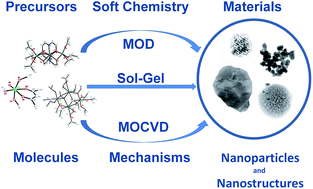
Nanoscale, 2014,6, 6229-6244
https://doi.org/10.1039/C3NR06336D
Free-standing carbon nanotube/graphene hybrid papers as next generation adsorbents
Freestanding SWCNT/graphene hybrid nanostructured papers exhibit significantly improved adsorption capacity versus activated carbon and individual components.
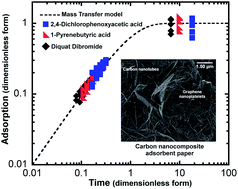
Nanoscale, 2014,6, 6322-6327
https://doi.org/10.1039/C4NR01028K
Synthesis of NASICON-type structured NaTi2(PO4)3–graphene nanocomposite as an anode for aqueous rechargeable Na-ion batteries
NASICON-type structured NaTi2(PO4)3 nanoparticles homogeneously anchored on the surface of graphene nanosheets have been synthesized by a solvothermal approach. Due to the unique structures, the electrode exhibits excellent electrochemical performance as a potential anode for Na-ion batteries.
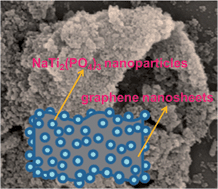
Nanoscale, 2014,6, 6328-6334
https://doi.org/10.1039/C3NR06730K
Tuning the surface charge of graphene for self-assembly synthesis of a SnNb2O6 nanosheet–graphene (2D–2D) nanocomposite with enhanced visible light photoactivity
A SnNb2O6–GR nanocomposite featuring a typical 2D–2D structure with enhanced visible light photoactivity has been synthesized via a simple surface charge modified self-assembly approach.
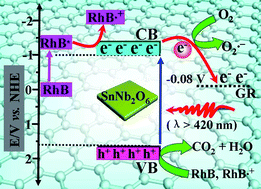
Nanoscale, 2014,6, 6335-6345
https://doi.org/10.1039/C4NR00116H
Facile synthesis of Au–SnO2 hybrid nanospheres with enhanced photoelectrochemical biosensing performance
Au–SnO2 hybrid nanospheres with enhanced photoelectrochemical biosensing performance were synthesized via a facile, one-step method.
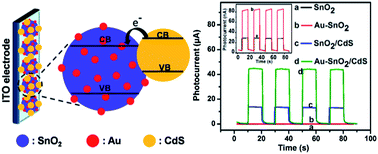
Nanoscale, 2014,6, 6315-6321
https://doi.org/10.1039/C4NR00520A
Graphene nanoribbon blends with P3HT for organic electronics
Solution processed 18 arm-chair graphene nanoribbons embedded in a matrix of regioregular poly(3-hexylthiophene) show improved photoconductivity and field-effect transistor performance.
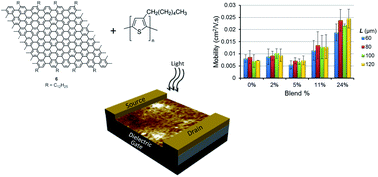
Nanoscale, 2014,6, 6301-6314
https://doi.org/10.1039/C4NR00256C
Towards waste free organic synthesis using nanostructured hybrid silicas
Immobilization and stabilization of metal nanoparticles within an ORMOSIL amorphous structure for highly efficient and selective heterogeneous solid catalysis.
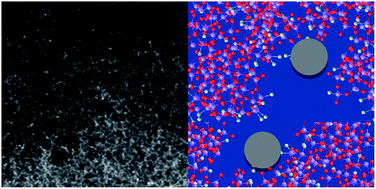
Nanoscale, 2014,6, 6293-6300
https://doi.org/10.1039/C3NR06127B
About this collection
This themed issue, guest-edited by Mario Pagliaro (CNR, Italy) and Jean-Marie Nedelec (ENSCCF, France), showcases research on hybrid materials. The collection is dedicated to David Avnir on his 65th Birthday, who is well known for his research in the areas of organically doped metals and sol-gel organic hybrid materials and biomaterials.